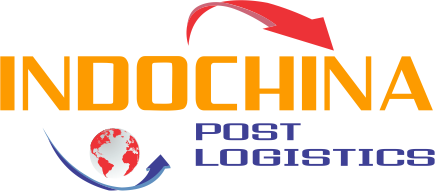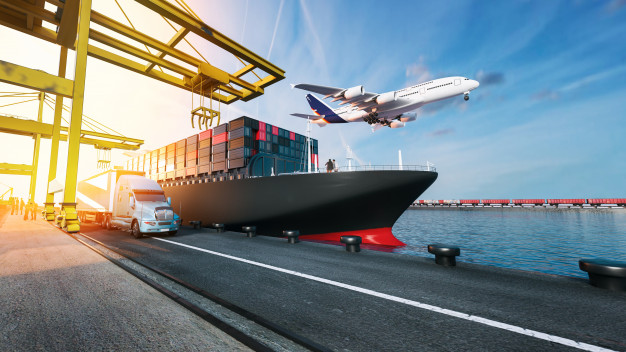Import, export, and logistics are now regarded as industries with promising growth prospects in our nation. However, the importance of logistics services in our nation has not been well recognized. Specifically, what is the state of our country’s logistics service sector, what obstacles must be addressed, and what the prospects for industry development are?
1. Number and size of enterprises involved in providing logistics services
Nearly 1,000 firms in Vietnam are involved in logistics. This is a sizable number, however, the majority are tiny and extremely small enterprises. Because of the limited money, the enterprise’s organizational structure is also simple, not highly specialized, and unable to establish representative offices in foreign countries, so the information source is restricted, and activity overseas must be approved by multinational corporations’ agents. As a result, most firms only operate as level 2, level 3, and even level 4 agents for international partners who have a worldwide network but have not yet established connected transportation activities multimodal.
Despite the large number, Vietnamese logistics companies only meet 25% of domestic demand and have focused on just a few services in this multi-billion-dollar service value chain.
2. The state of competition in the provision of logistics services
Because most Vietnamese exporters export products under the terms FOB and FCA in incoterms, the buyer has the right to decide on transportation, and the customer will, of course, select a business in their nation to carry out. This is done. As a result, Vietnam’s logistics firms will face a scarcity of possibilities to supply logistics. This is difficult to resolve because the majority of Vietnamese exporters process or ship goods to large clients with long-term contracts with global logistics corporations.
Because Vietnam has a trade imbalance, this is an appealing market for Vietnamese logistics firms. Previously, Vietnamese importers mostly purchased products under CIF terms; now, Vietnamese importers are increasingly transitioning to FOB terms, generating possibilities for logistics firms. Vietnam takes advantage. However, because many international businesses invest directly in Vietnam and are also the largest importers, a substantial portion of this market remains in the hands of foreign logistics firms.
3. Expenses for logistics services
Vietnam’s logistics costs are estimated to be approximately 25% of GDP, far more than in industrialized nations like the United States and far higher than in emerging countries like China or Thailand. These high logistics costs significantly undermine Vietnam’s ambitions to establish low-wage labor markets and increase exports. The major reason for this scenario is that Vietnam’s transportation infrastructure is too old and overburdened, with a cumbersome administrative management system, and Vietnamese firms are not actively employing rental services (third party logistics).
4. Information infrastructure of the logistics industry
This is a shortcoming of Vietnam’s logistics industry. Despite having a high level of awareness in using information technology to their commercial activities, logistics firms are still far inferior to international logistics organizations. Even in terms of website design, most Vietnamese businesses’ websites only identify themselves, their services, and the lack of utilities that consumers want, such as track and trace tools. orders), train timetable, e-booking, tracking documents… Meanwhile, the ability to view and control orders (visibility) is a criterion that shippers value when selecting suppliers. logistics services for yourself.
5. Human resources in logistics
Universities have not yet provided comprehensive instruction in logistics. The only Ho Chi Minh City University of Transport now offers Logistics and Multimodal Transportation. The remaining students at the Maritime, Foreign Trade, and Transport Universities only study a few related disciplines. With such a short learning period for a very complicated business chain like logistics, teachers are unable to convey a significant quantity of knowledge to pupils. Furthermore, the quantity of highly qualified professionals is still insufficient in comparison to the need.
Currently, Vietnam employs around 6,000 people in the logistics industry, but those with expertise and knowledge of international law are in short supply. Currently, the primary human resources for this business come from shipping brokers, freight forwarding firms, and usage-based on available capabilities. Meanwhile, this is a field that needs specialists who understand not only the laws and procedures of the host country but also international laws and have contacts all over the world. As a result, systematic and high-quality import-export and logistics training are critical for our country today.
6. International evaluation of Vietnam’s current status of logistics services
According to a World Bank survey, Vietnam ranked 53rd out of 150 countries included in the ranking. Singapore ranks first (1) in the world, followed by Western European countries (Germany, the Netherlands) and other developed countries such as Australia, Japan, Switzerland, Canada, and Denmark. Compared to other Asian countries in the region, Vietnam lags behind Korea (25), Malaysia (27), China (30), Thailand (31), India (39) but still more than the Philippines ( 65), Cambodia (81) and Laos (117).

